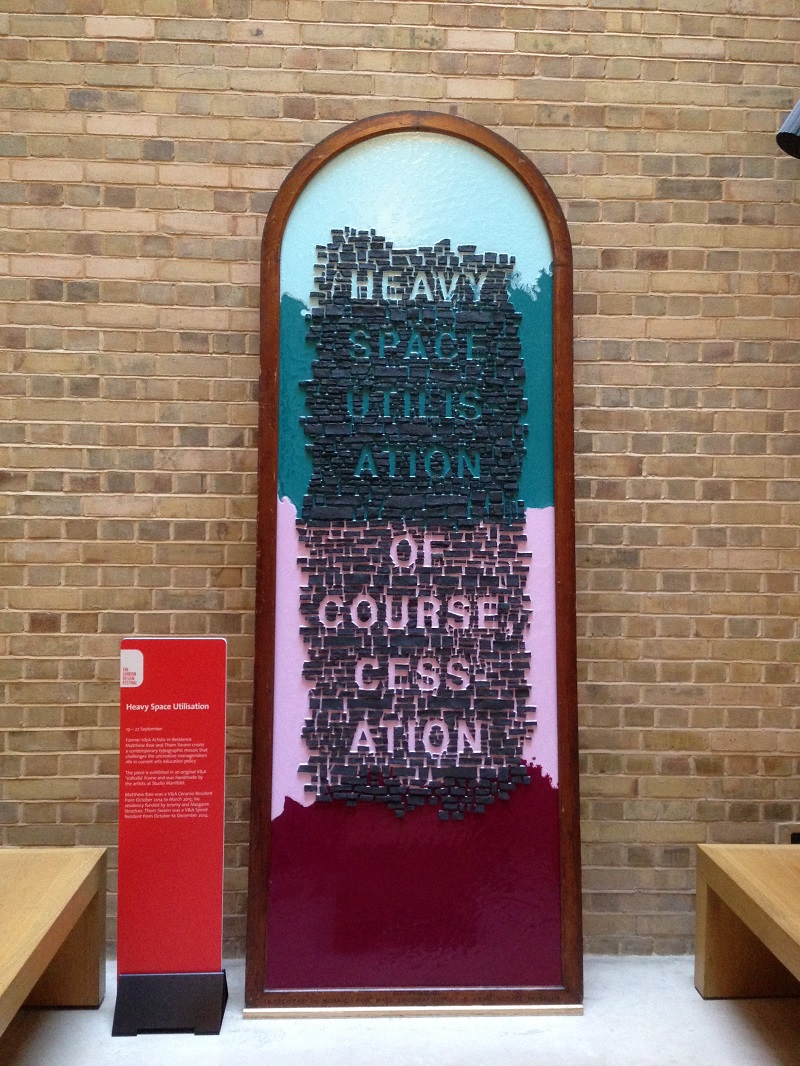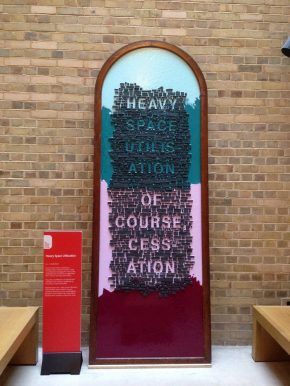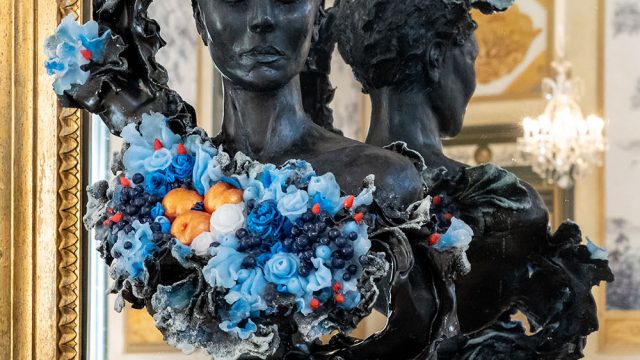Keep an eye out for Matthew Raw’s and Thom Swann’s Heavy Space Utilisation on the ground floor, at the bottom of our glass lift in Gallery 10b of the Medieval & Renaissance Galleries.
A new work by former artists in residence Matthew Raw and Thom Swann, Heavy Space Utilisation is a contemporary typographic mosaic which challenges the uncreative managerialism rife in current arts education policy. The piece is exhibited in an original Victorian ‘Valhalla’ frame and has been handmade by the artists at Studio Manifold.
Using a document released by Falmouth University to justify the closure of its crafts course as a starting point, Matthew Raw and Thom Swann seek to highlight how arts education has become focused upon student recruitment, employability, profitability, and other financially-minded targets, rather than criticality, expression and experimentation. By placing a selection of the words and phrases from this bureaucratic document in the dual context of their highly crafted mosaic and the V&A itself, the artists hope to expose the insincere double-speak that is used to justify the closure of some arts courses – and corral others into conforming to a corporate model of arts education.
The artists state: “We want to expose the farcical nature of phrases such as ‘heavy space utilisation’. The phrase is used to describe arts courses which are being closed, or threatened with closure, due to the fact that they are reluctant to ruthlessly maximise the space in which they operate. We believe that this approach towards the arts lacks imagination and will heavily impact the creative development of future generations. By displaying ‘heavy space utilisation’ at a large scale in the V&A, we aim to contrast this attitude’s meanness of spirit and timid ambition with the masterpieces the V&A houses, drawing attention to the way arts education is approached in our managerial culture. This trend in education is symptomatic of a wider political culture which only dreams in terms of profit.”
The piece is installed in a three meter-high frame originally made in the 1860s for one of the V&A’s Valhalla Mosaics – mosaics of the great and the good of the world of art and design made especially for the V&A – several of which are still displayed on the walls of the museum.




